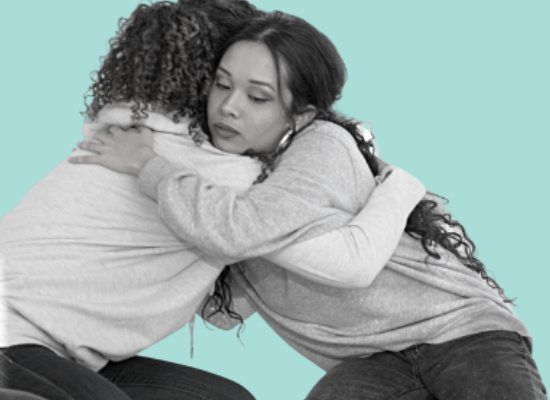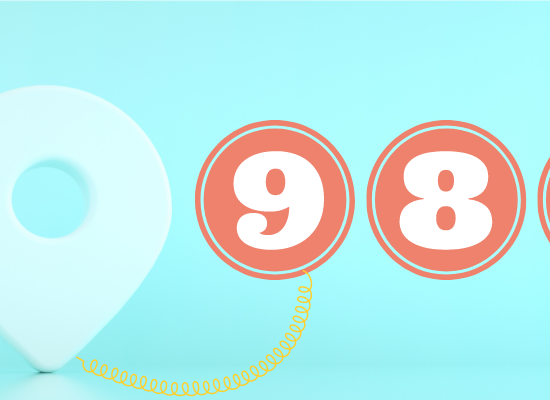
Stephanie Hepburn is a writer in New Orleans. She is the editor in chief of #CrisisTalk. You can reach her at .
As the remaining time narrows before 988 must be live on July 16, 2022, states are scrambling to close labor gaps in behavioral healthcare. Workforce scarcity in the field has long been an issue, and it’s projected to continue. Thought leaders have come up with short- and long-term solutions that include creating a new behavioral health first responder or psych-EMT role and tapping into and expanding upon an existing un- or underutilized peer workforce. Both, say experts, promote rapid workforce growth. Also, with lower barriers to entry, they could improve racial and ethnic concordance between providers and patients.
However, using peers to address workforce shortages gives Jess Stohlmann-Rainey pause. She’s the director of program development at Rocky Mountain Crisis Partners in Colorado. She also has lived expertise with mental health crisis. Stohlmann-Rainey points out that peers can help address workforce shortages but in the role of peers. “Engaging peers in work they aren’t trained to do is exploitative and dangerous,” she says.
She believes why peers are often thrown into roles more like behavioral health technicians is because of a fundamental, nationwide misunderstanding of what peers do and the function they serve. “It’s why many crisis service providers find they’re struggling to retain their peer workforce,” she says. That and because pay for certified peer specialists often lags far behind other mental health professions. A survey published in 2016 by the College for Behavioral Health Leadership revealed the average hourly wage among peer support specialists to be $15.42. “We shouldn’t pay peers who provide life-saving crisis support less than others who do.”
“Also, we shouldn’t look at peer support as lower-cost labor but rather as cost-effective because peers help divert people from the most costly—financially and personally—levels of care.”
Peer support is designed to be an alternative to clinical intervention, but Stohlmann-Rainey says crisis providers often use it as a supplement. “Or just for people believed to be at ‘lesser risk,’” she says. However, as evidence mounts on the efficacy of peer support, she points out that it’s increasingly showing up in legislation and funding but with little guidance or direction on implementation. “That’s because everyone seems to know peer support is good,” she says, “but they haven’t spent the time to learn what peer support is.”
Stohlmann-Rainey has witnessed crisis services integrate peers throughout their programs, but not in a way that best utilizes their skill sets. For example, in a crisis setting, peers might be assigned to sit with a person while they’re waiting on a clinical intervention. “There’s nothing inherently wrong with sitting with a person, but that’s not the best use of peer support services,” she says. Peers are also often asked to help foster a patient’s compliance and adherence to medication or clinical processes, which steps away from the person-led ethos of peer support. “Organizations,” she says, “are throwing in peers like spaghetti at a wall to see what sticks.”
While it can be beneficial for a person to speak with someone who has gone through the same treatment program and relates to their experiences, Stohlmann-Rainey says that’s an underuse of the skills peers have to offer. “Peer support is designed to help a person in crisis find ways to live the life they choose to live,” she says. It’s a substitute for a traditional pathway that doesn’t work for everyone. “The interaction might not even be recovery-focused but rather centered on healing, choice, and developing power.”
In Colorado, callers who dial 988 can select whether they want to speak with a peer support specialist or a crisis counselor. If they want to talk to a peer, Stohlmann-Rainey says they can just press star. Rocky Mountain Crisis Partners answers Colorado’s crisis hotline and peer support line. It’s also the state’s National Suicide Prevention Lifeline accredited call center. The Covid pandemic has made the need for peers in a peer support role even more evident, with calls to Colorado’s peer support line jumping 157% and 124% higher in February and March 2020, respectively, than the same months in 2019.
When a caller reaches out to Colorado’s peer line, the caller and peer support specialist develop a relationship. “Most trauma happens in relationships,” says Stohlmann-Rainey, “but so too does most healing.” The footing throughout the interaction is about equity and a balance in power. “The person calling and the specialist are both peers,” she says. “There’s not a helper and a person who is helped.” However, the program wasn’t always this way. Stohlmann-Rainey began her tenure at the nonprofit as a consultant hired to improve the peer support program. When she started, certified peer support specialists mainly functioned as behavioral health technicians who did brief screenings and transferred callers with more intensive needs to the crisis line. “My first step was to reframe what peers do and separate clinical services from peer support,” she says.
Much like how police, fire, and EMS are often on the operations floor at a 911 call center, at Rocky Mountain Crisis Partners, peer support specialists and call counselors are in separate areas of the same call center. “They can hear each other and talk to one another,” says Stohlmann-Rainey, “and there’s connection and community among them, but the services aren’t the same.” For example, on the clinical side, call counselors use screening and assessment tools to help them understand a caller’s experience. “Conversation and connection are part of how we use those tools,” she says. However, on the peer support side, the relationship is more important than content. “We start by connecting with the caller and then negotiate what that relationship will look like.”
The model Stohlmann-Rainey has used to develop the peer line is called Intentional Peer Support, a framework for peers to build relationships where they “learn and grow together.” The structure shifts the concept and power dynamic of support; it’s a trauma-informed approach that moves the dialogue away from “what’s wrong?” to “what happened?” Peer support specialists don’t begin the conversation with a caller by assuming there’s a problem. Instead, the specialist and the caller discuss their lives and experiences within the context of their relationships and communities. “We focus on how they can move toward where they want to be, not on challenging the person’s worldview.”
A caller experiencing psychosis who reaches out to the peer line might discuss how their cell phone is listening to them and share that they’re not sleeping. Stohlmann-Rainey says the peer support specialist wouldn’t call into question the person’s reality but rather acknowledge how the person feels. For example, she says the peer would say something like, “The cell phone issue is awful, and you feel like you need a cellphone to get by in the world. If something could be different, what would that be? And how can we find ways to replicate that so even though you’re experiencing monitoring through your phone, you’re also getting other things you want and need?”
The communication between the peers looks quite different from a clinical intervention. The goal isn’t to move the caller toward a healthier place per se but rather discuss what they want to get out of the interaction with the peer support specialist. Stohlmann-Rainey points out these differences exist not only in the call center sphere but throughout the crisis system. “Peer services aren’t clinical services, and we shouldn’t conflate them,” she says. “Peers provide a unique, specific service, and that’s their strength.”
In 2019, Stohlmann-Rainey led a statewide peer crisis workforce needs assessment in Colorado. The survey, which is not public, dug into successes and shortcomings of the use of peer support in Colorado’s crisis system. For example, the evaluation revealed that clinicians, instead of peers, frequently supervise peers. “Even when a clinical supervisor is excellent at working with peers, they don’t know what it’s like to be a peer,” she says. Also, because self-disclosure is part of peer work, clinical supervisors may push peers to disclose personal information. “Sometimes self-disclosure bleeds into the supervision space, and a supervisor might ask a peer to discuss their lives in a therapeutic way.”
The assessment also revealed that peers in Colorado frequently didn’t have access to peer-specific continuing education. “Peer workers who aren’t given the opportunity to grow in their practice are going to struggle with doing the work,” says Stohlmann-Rainey. “And that negatively impacts them and the people they serve.”
She hopes as states prepare for 988—the three-digit number for mental health, substance use, and suicide crises telecom companies must make live by July 16, 2022—that they fund peer support services and specifically support peers in peer roles. Otherwise, she says, the lack of parity and high turnover in the peer workforce will continue. “Simply adding peers to crisis teams doesn’t maximize the power of peers,” she says, “and it hinders workforce equity.”









